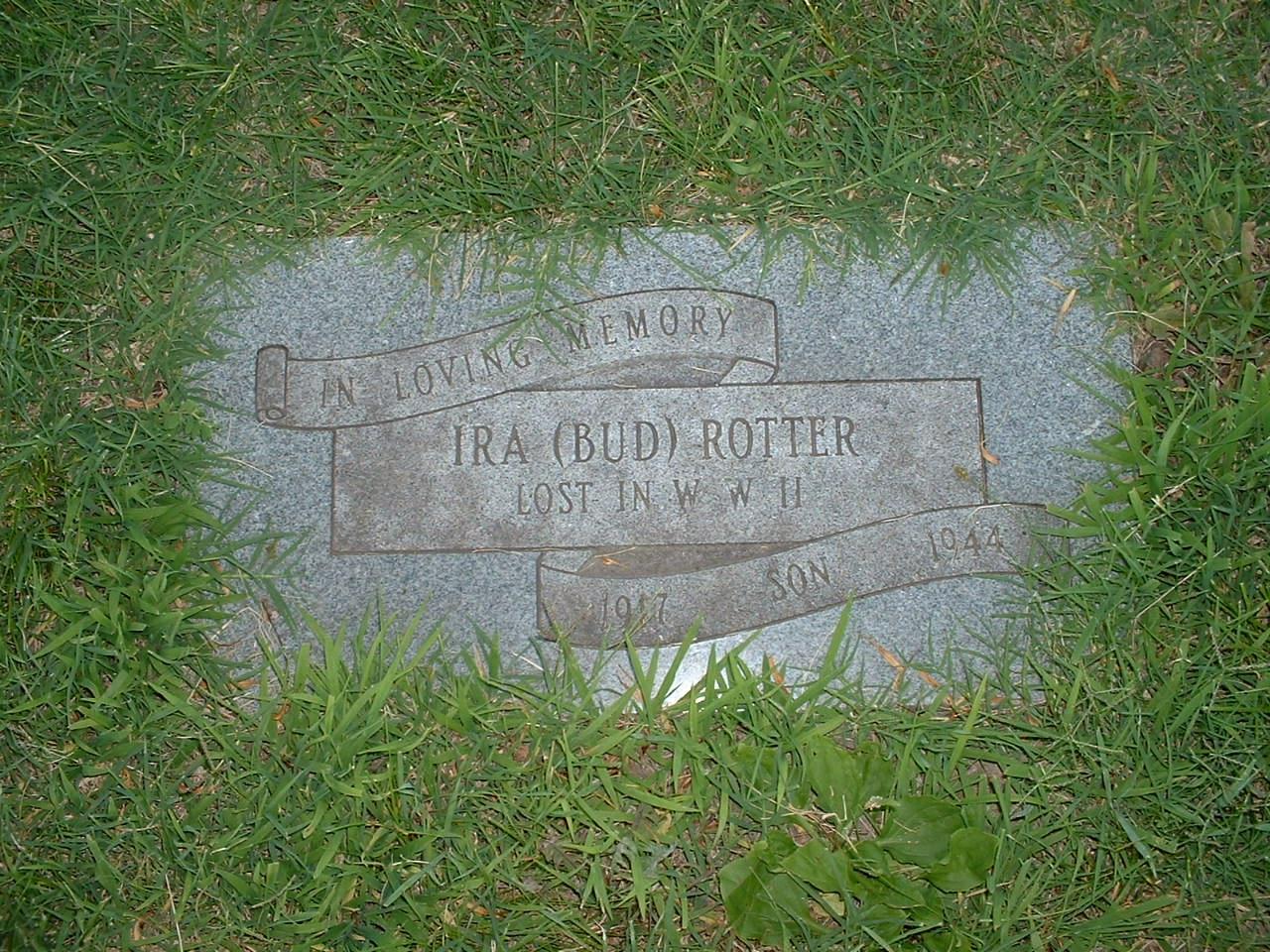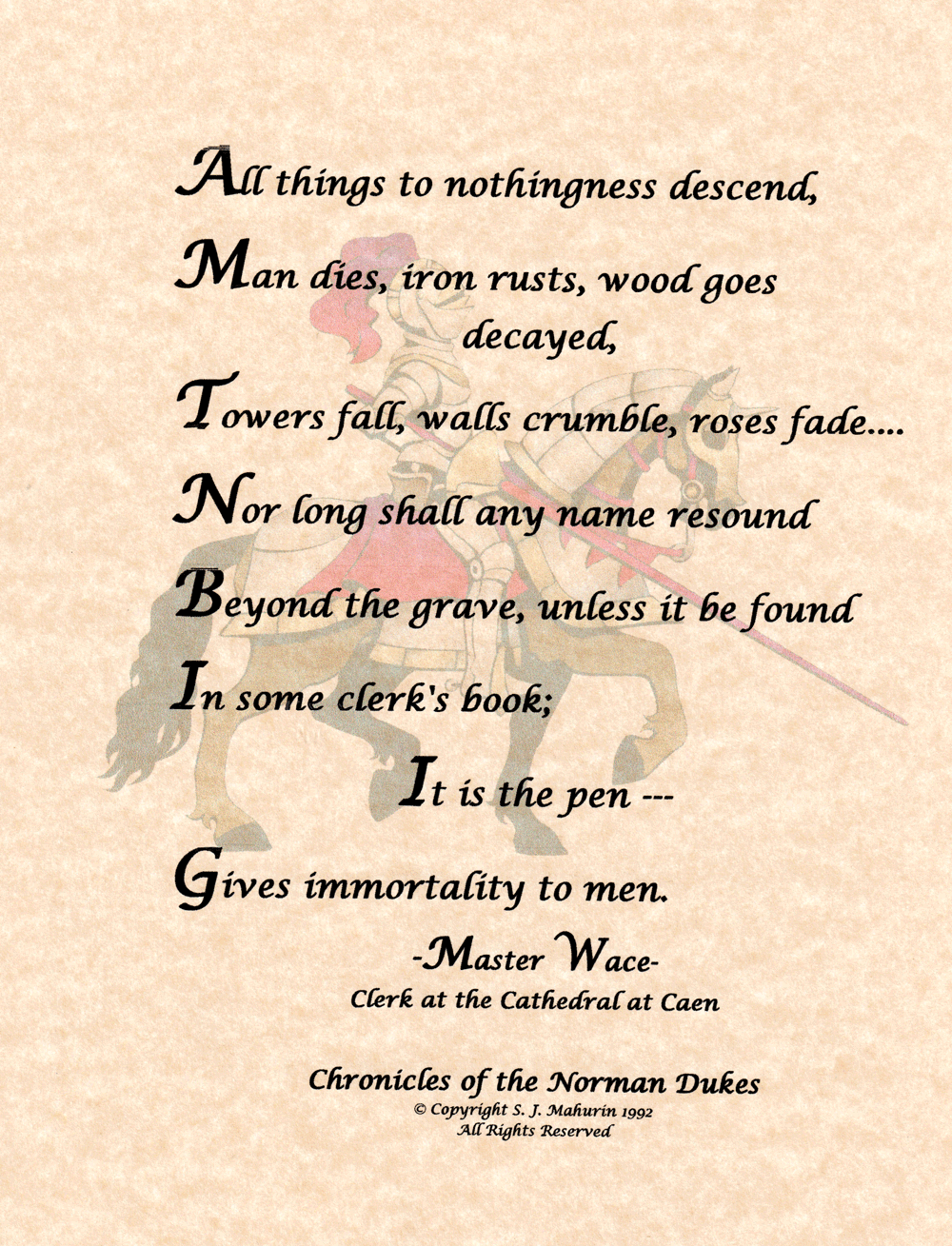Destructive Typhoon of December 17-18, 1944
Almost destroyed the United States’s 3rd Fleet
Mrs. Evelyn Rotter of Cardin Oklahoma received word that her husband, Ira F. Rotter, fireman first class, previously reported missing, had lost his life as a result of a typhoon last Dec 18. Seaman Rotter volunteered for service and left for training May 31, 1944. He received his boot training and graduated from basic engineering school in San Diego California Before entering the service he was employed as a miner by the Eagle-Picher Mining and Smelting Company. Seaman Rotter is survived by his wife, and two children, Mrs. Evelyn Rotter; Billy Rotter, 5, and Emma Jane Rotter, 3; two sisters, Mrs. Henrietta Bets of Cardin Oklahoma, and Mrs. Charlene Moreland of Oakland California, and his mother, Mrs. Emma Medley of Independence Missouri. Burial place not noted.
Note: G.A.R. cemetery at Miami, has Ira F. Rotter buried there.

The Storm of the Century
by Marie VanSickle Rentfrow
Miami Oklahoma
On Dec 17 and 18, 1944, there was at least three Miamians right in the middle of the “Storm of the Century.” Pharmacist’s Mate 1, U.S. Navy , Bill Rentfrow and Staff Sgt. Everett M iles Baldwin, U.S. Army , survived the storm, but Ira F. Rotter, of Cardin Oklahoma, did not. Fireman First Class Rotter died during the typhoon that struck the Third Fleet.
| Report from the Third Fleet | ||
|---|---|---|
| The great typhoon of December 17 and 18, 1944, dead or missing men | 790 | |
| U.S.S. HULL, dead or missing | 202 | |
| U.S.S. MONOGHAN, dead or missing, about | 256 | |
| Others killed or missing from other ships. | ||
| Injured, more than | 80 | |
| Planes, blown overboard or damaged beyond repair | 146 | |
| U.S.S. SAN JACINTO, COWPENS, CABOT, LANGLEY and MONTEREY, | ||
| All light carriers were badly damaged. Monterey’s damages covered nine closely-typed legal pages. | ||
| U.S.S. MIAMI and the BALTIMORE, cruisers, required major repair | ||
| U.S.S. CAPE ESPERANCE, ANZIO and ALTAMAHA, escort carriers, | ||
| required major repair | ||
| U.S.S. AYLWIN, DEWEY, BUCHANAN, HICKOX, BENHAN, DONALDSON, | ||
| MELVIN R.NEWMAN and DYSON, destroyer escorts, required major repairs, while nine other vessels sustained more minor damage. | ||
| Strikes against Luzon were canceled and the Third Fleet straggled into the atoll of Ulithi. | ||
The date was December 17, 1944, the place was somewhere between Leyte Gulf and Okinawa. The wind was reported Force 26 Knots; Barometer, 19.74; Temperature, 82; visibility, 5 miles; Sea, Force 4. In the early afternoon orders for fueling were suspended, the Commander of Third Fleet set course to northwest, then later to southwest to escape a storm center not clearly located. The barometer kept on dropping, the winds kept moaning, and there was an uneasy leaden feeling of a hand across the heavens, but the Third Fleet steamed on in cruising formation, with all systems alert, radars searching, searching...
December 18, 1944. Monday . The Third Fleet moved through troubled waters. The night was haggard, sleepers were braced in their bunks, but the sharp motion of the aroused ocean shook and pounded the ships, making sleep fitful and despairing. Barometers dropped steadily, rain squalls flung spray and spume to reduce visibility; station-keeping was difficult – at times almost impossible.
Not until dawn did Third Fleet realize it lay in the path of the grand-daddy of all typhoons, and many of the units to the north and east of the main body of the Task Group, were directly athwart the “eye” of the approaching typhoon. Fleet course was ordered changed to due south, but it was too late; the fury of the typhoon was upon them.
8:00 to 12:00 on Dec 18th, the moaning violence of the wind was terrible – with shrieks and whinnies, roars and shudders, beating and clutching. The sea was convulsed, diabolic; ships were laboring deeply laid over by the wind, rolling rigidly through tremendous arcs with sharp violent jerks, pounding and pitching, buried deep beneath tons of water, rising heavily, streaming foam and salt from gunnels and hawse pipes. Violent rain gusts, spindrift blown with the sting of hail, a rack of scud blotted out visibility . Third Fleet was scattered; few ships could see others; only on the radar scopes did the pips of light loom up to show in wild confusion.
The war was now against Nature, not the Japanese; no man in all the fleet had ever felt before the full fury of such a howling, demonic wind. Some of the fleet was in the “dangerous semicircle” of the typhoon where no seaman ought to be. A few ships - though rocked and tossed like chips - were on the fringes of the terrible vortex, but at least one task unit was directly in the center, where the funnel of wind and the boiling ocean leapt to climax.
The barometer dropped as no seaman there had ever seen it fall before; the winds grew stronger. The wind velocity registered more than one hundred knots. Fires that were started from fighter airplanes and other things being ripped loose and thrown about an into the catwalk, were also put out by the sea which started it.
Several ships recorded the barometer at a flat 28 inches, an awesome low; one, the DEWEY, read hers at 27.30- possibly the world’s lowest recorded reading. The oiler NANTAHALA recorded a wind velocity of 124 knots. The wind shifted rapidly in direction as the typhoon circled, blowing from north and south and east and west-backing and falling as do all circular storms - and increasing in intensity to Force 17, far bey ond that ancient nautical measuring stick of mariners, the Beaufort.
Third Fleet was scattered now, station-keeping impossible, visibility five hundred yards to zero, only the radars – when operative – preventing collisions. The Third Fleet Commander in NEW JERSEY, his plan to refuel this day long since abandoned, his immediate commitment to General MacArthur regretfully canceled, recorded in his war diary, the reports of disaster.
The ships, big and little, are racked and strained, punished and pommeled. The men are dazed; all hands are in life jackets; none stand top side in exposed positions; muscles are sore and bruised from clinging to stanchions, pounding against bulkheads. The violent rolls and the terrible mountains of water - seventy feet from trough to crest - are frightening, even to the exp erienced.
The voice of the storm drowns all other voices; the wind has a thousand notes - the bass of growling menace, the soprano of stays so tautly strained they hum like bowstrings. The tops of the crests are flattened off by the wind and hurled straight before its violence; rain and spindrift mix in a horizontal sheet of water, one cannot tell where ocean stops and sky begins.
The fleet is widely dispersed across a raging ocean; some ships have felt the full fury of the storm; others are still to feel it. Between 1100 and 1400 of that day the peak is reached: “mountainous seas....confused by backing winds made the vessels roll to unprecedented angles.” The destroyer DEWEY, battered and racked in the morning watch, makes it - though hurt almost mortally. Green water slooped over the starboard wing of the bridge as the ship lay over an estimated 80 degrees to starboard - and lived to tell about it - perhaps the first vessel in the history of the sea to survive such a roll.
At 11439 the wind slackened to about eighty knots. The storm curved on into the wide open spaces of the Pacific the rest of that day, the eighteenth. The winds still howled; the ships still heaved, the ocean was confused and even on the nineteenth the seas were huge and horrid, but the great typhoon was over. The storm left the fleet scattered and broken, with more unrequited damage, as Admiral Halsey later noted, than any time since the First Battle of Savo Island.
An Account from Staff Sgt. Everett Miles Baldwin, U.S. Army, who was in the “Great Typhoon”
Once we secured that island, Okinawa, we got back on the ship to go to the Philippines. That’s when we
hit the “Great Typhoon.” During the typhoon, we were on the transport ship - about 20,000 soldiers, not counting
the sailors. There were about 15,000 men in my Battalion. There were pontoons on each side of the ship which
helped to keep it from sinking. You cannot believe what a typhoon is -- you’d be down at the bottom, looking up at a
wall of water five stories high. The next thing you knew, you’d be up on top, looking down five stories to the
bottom. Being in a typhoon is just about like standing out in the open and somebody pouring a barrel of water right
down on you. We ate our rations standing up, braced as well as we could.
(NOTE: This taken from Baldwin’s biography as told to and written by Marie Rentfrow, 1997)

